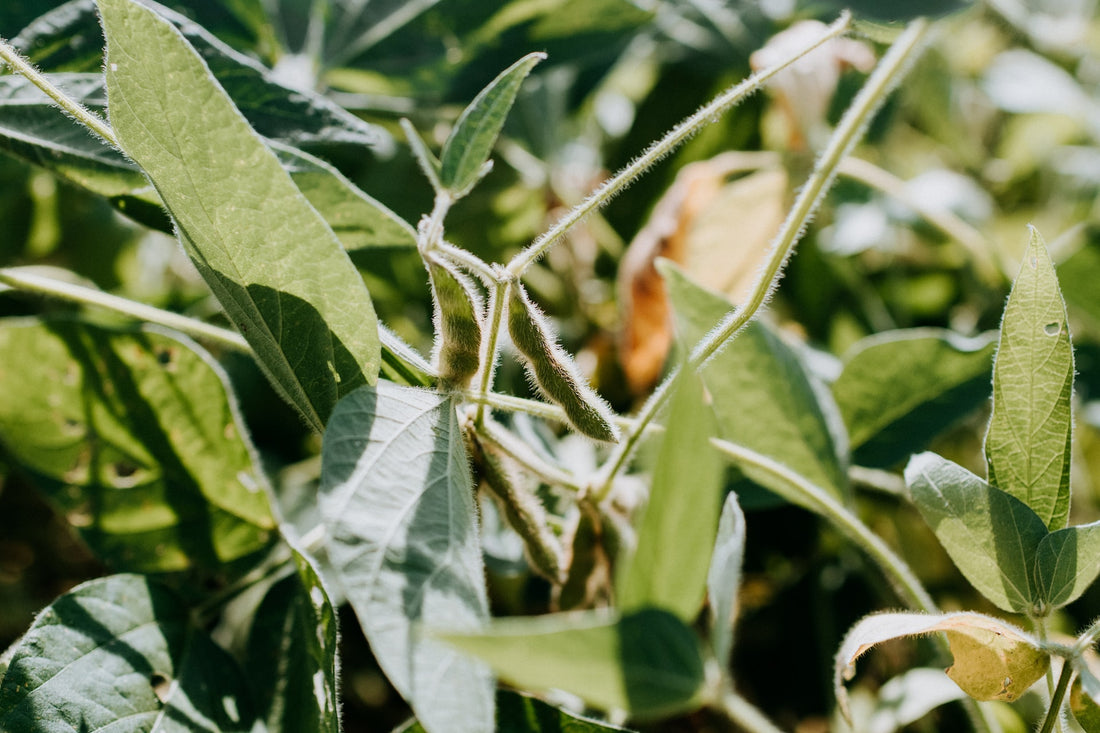Beans are easy to grow, and they're excellent sources of protein. Growing beans is an excellent place to start if you want to lead a more plant-based lifestyle or want to be more self-reliant. They require far less resources than meat production.
There are many options for the home gardener to choose from when it comes to growing beans. Some will depend on the climate where you live; however, there are options for all climates.
These beans are known as shell beans or dry beans. They are allowed to fully develop on the vine and harvested at the very end of the season to be dried and stored. These beans can also be harvested while they are young and green and used just like regular bush beans. Of course, doing this reduces the end dried bean yield, but it's fun to try them at different stages and enjoy the unique qualities (and nutritious!) of both.
Cowpeas
Also called field peas or black-eyed peas, these are a popular staple in Southern cooking. There are vine and bush varieties. Vining varieties can be trellised or planted around the corn to use the stalks for support. The pods are 6-10" long and contain many beans.
Cowpeas are resilient and even grow well in poor soil. They need around 80-90 days to reach maturity but are ready for picking as green pods around 60 days.
Plant cowpeas in full sun 3-4 weeks after the last frost of Spring. Sow them 1” deep, 3” apart in rows spaced 4-6'. Water regularly and consistently. Cowpeas are heat and drought-tolerant but shouldn't go long periods without water.
When the green pods are young, they can be picked and eaten like green beans. They are ready to harvest as dried beans when they turn brown, and the vines begin to die. Pick them before the pods start splitting. Shell and lay beans out to dry completely before storing, or they will mold!
One cup of cooked cowpeas contains 199 calories and 13.3 grams of protein.
Soybeans
The soybean plant is tall and somewhat whimsical looking. It grows up to 3', and the branches spread out like wispy tentacles. A lot of garden space is needed to grow these. The pods range from 1-4" and hold 2-4 seeds each. Soybeans reach maturity in around 100 days.
Plant seeds in the early Spring as soon as the soil is 60F. Sow seeds 1" deep, 2-3" apart in rows spaced 24". When the seedlings are 4", thin them to 8". Water regularly, being careful not to let the soil get soggy.
Soybeans can be picked when they are half-mature. The pods are green and plump. Leave them for another 60 days for dried shell beans. Do not eat soybeans raw; they can cause an upset stomach. Always blanch or boil them first.
One cup of cooked soybeans contains 298 calories and 28 grams of protein.
Edamame/Soybeans Seeds
Fava Beans
The fava bean, or broad bean, is a powerhouse of protein and nutrients. They have a slightly cheesy taste that is unlike any other bean variety. Fava beans grow great in containers as well as in the garden.
Fava beans are a cool-weather-loving plant that grows quite quickly – they reach maturity in 80-100 days. They don't grow on long twining vines like most other beans. Favas are 2-6 foot tall and erect plants with giant podded seeds. They don't get very wide, so you can plant them pretty densely.
Start fava bean seeds in Spring as soon as the soil is above 60F. Plant the seeds 1-2 inches deep and 6 inches apart. In 1-2 weeks, they will germinate. Water regularly to keep the soil moist but not too soggy.
A single cup of cooked fava beans is 188 calories and has 13 grams of protein.
Lima Beans
Also known as Great Northern beans or butter beans, lima beans have a nutty, tangy flavor that is perfect for soups and stews. They also are a great addition to green or bean salads.
Lima beans reach maturity in 65-90 days – 65 days for green, fresh beans, and 90 days for shell beans. The pods grow 3-8 inches long, and each has 2-4 seeds.
Like soybeans, lima beans should not be eaten raw. They contain a mild toxin that will cause digestive upset. Cook fresh beans for at least 10 minutes before eating them.
Sow lima bean seeds 3-4 weeks after the last frost, when all danger of cold has passed. Plant them 1-2 inches deep and 6-10 inches apart. The plants get rather broad in maturity, usually around 1 foot. When the seeds sprout, thin them to 12-14 inches apart.
Lima beans are beloved for their drought tolerance, heat tolerance, and prolific production.
One cup of cooked lima beans has 15 grams of protein and is 209 calories.
Jackson Wonder Lima Beans
Baby Henderson Lima Beans
Baby Fordhook Lima Beans
King of Garden Lima Pole Bean



